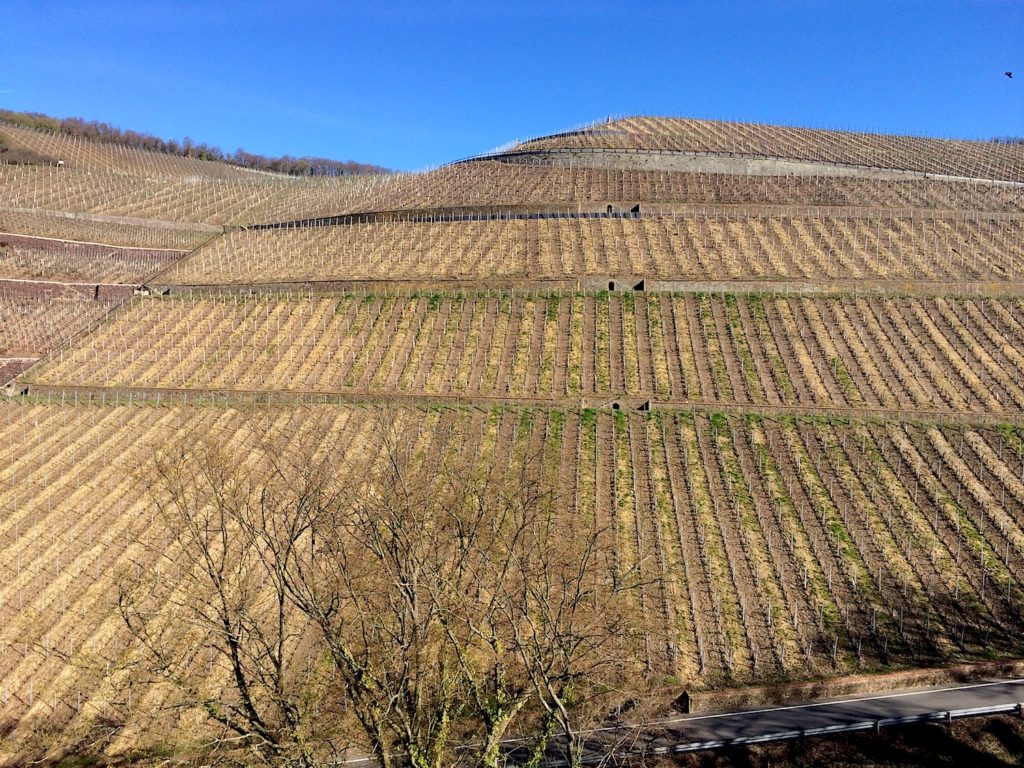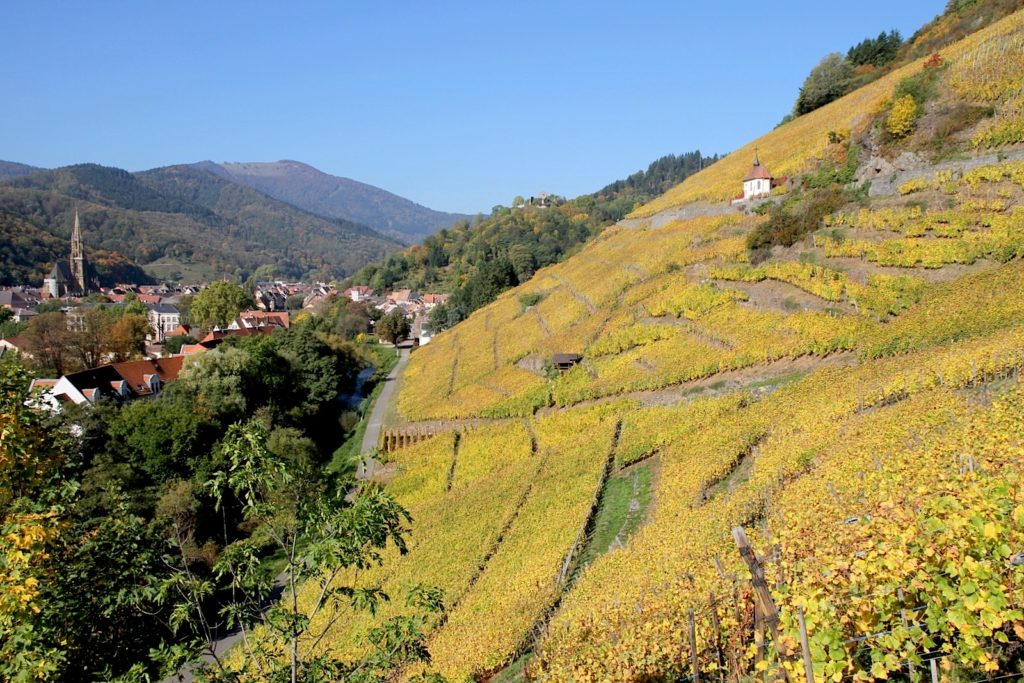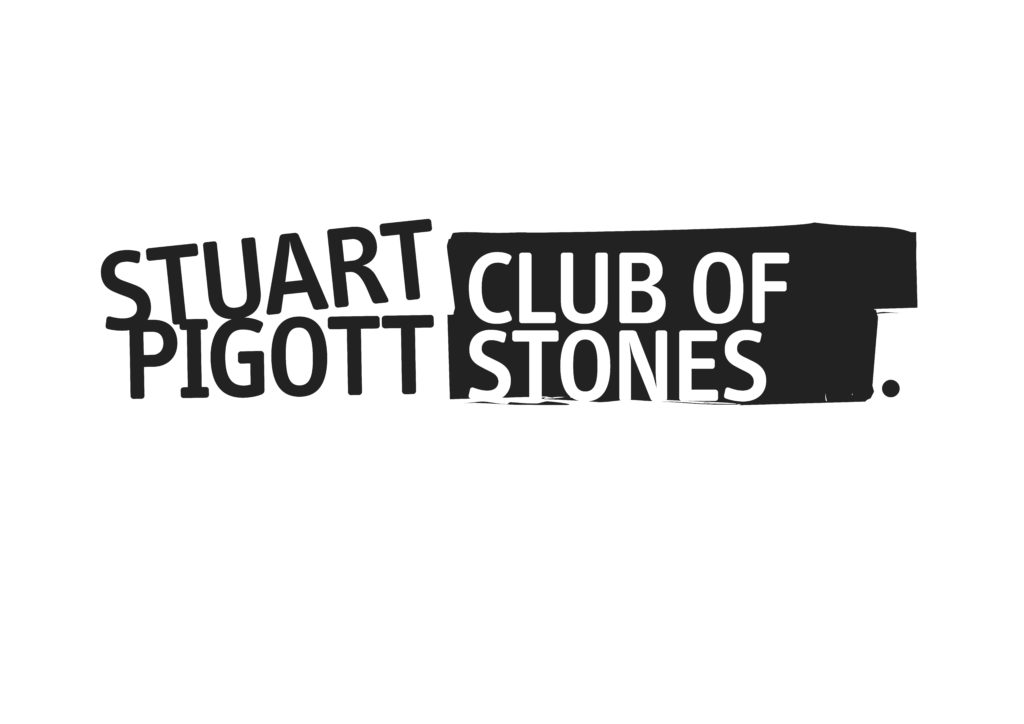
Today is my 59th birthday and to celebrate that here’s the story of the crucial moment in my life as a wine journalist. Leonard Humbrecht, how can I thank you properly?
What was that „pungent“ taste I found in the first Kupfergrube wines I encountered at Gut Hermannsberg (GHB) back in 1984? The word “encountered” seems appropriate, because for me it was a kind of sensual Close Encounter of the Third Kind; my first contact with an alien world of taste far removed from all the flavours of my youth. Sometimes it shocked me, other times I felt it me pulling in with erotic force, but its mystery always fascinated me. Blindly, I searched for the answer.
Today, I would say that a taste characteristic to the wines from a single specific vineyard is definitely an example of terroir. Back in the mid-1980s I was already familiar with the French word terroir, or the taste of the place, but I assumed it could only apply to certain French wines, that is terroir was the taste of certain French places. During the years before the fall of the Berlin Wall Germany was such a different place from the France and when you looked at wine in the two countries the contrast was stark. That only reinforced that assumption, which certainly wasn’t limited to me.
Serendipity means chance discovery, and for me that means it is always revelatory. In this case, it all began at a tasting of fancy French wines in London one evening during the mid-1980s, an event that began in an atmosphere of reverence towards the Grand Cru of Francetypical for the period. In spite of the fact that vintage and the degree of human commitment clearly influenced their quality, these wines were often treated as timeless and holy, existing on a different plane to all others. Of course, that attitude made some of these tasting extremely boring, but this one was different.
After a cautious start, the expert presenting the tasting began drifting ever farther from the beaten track, and by the end of the evening I was hanging on his every word. It was poetry compared with the usual predictable platitudes and I wish I could remember you who he was and which wines we tasted that evening. However, one moment etched itself deeply into my memory. Speaking of the final wine he said, “as the Roman Emperor Hadrian once wrote, wine introduces us to the volcanic mysteries of the soil.” That sounded so exciting, but what did it really mean? Just a few days ago I discovered that those words sound too good to be true, because they actually come from Marguerite Yourcenar’s 1951 novel Memoires d’ Hadrien: “wine introduces us to the volcanic mysteries of the soil, to its hidden richness.”
Shortly afterwards the organizer of that tasting, Liz Berry MW of wine merchant La Vigneronne helped set up a trip to Alsace for me. Back in January 1987 when I departed from London Alsace meant France and the recent introduction of a Grand Cru vineyard classification system there only seemed to confirm that. However, when I arrived at Domaine Marc Kreydenweiss and tasted the last vintages of the cool and very mineral dry Rieslings from the Kastelberg Grand Cru I realized that Alsace had one foot in French wine traditions and the other firmly in Germanic wine culture. Even those wine names tell that story!
The next day I visited Domaine Zind-Humbrecht in Turkheim and met Leonard Humbrecht, the charismatic and gentle giant who was the most important promoter of the Grand Cru system in Alsace. Leonard’s influence not only on his home region of France, but also on Germany and can hardly be underestimated, but this is largely forgotten, because it all happened back in the 1980s. In fact Leonard’s revolution began during the 1970s when he was one of a handful of growers who purchased the steep vineyards that most producers were abandoning in favour of gentle slopes that were easier to cultivate.
As we tasted his current releases in bottle and the 1986s from the barrel Leonard took great trouble to explain the typical aromas and flavours for each of his vineyard sites. We visited many of them so that I could better understand how the soil-type influenced the taste of the wine. I remember feeling enormously excited as Leonard revealed to me how terroir functioned in this wine culture outside the French main stream, also with Germanic varieties like Riesling and Gewürztraminer. The bulk of my work of the following 20 years grew out of these experiences and what I learned during those days is still essential for my work, also now at GHB.

On the last day we had lunch in a Winstub and Leonard poured some older wines each of which was so fascinating that I could have spent hours studying it. The last of these was the 1983 Riesling Grand Cru Rangen and I’ll never forget the moment of complete astonishment when I lifted that glass to my nose and smelt the wine for the first time. With its wild and intensely smoky character it was like nothing else I’d ever tasted from Alsace.
Then, Leonard told me the story of how the tasting team of the magazine Revue du Vin de France had been split down the middle by it: one half considered it untypical and therefore disappointing; the other was convinced it was remarkable and unique. He explained the reason for this special character was the Rangen’s volcanic bedrock. There it was in my glass in the most literal form, the volcanic mystery of the soil that Leonard Humbrecht had rediscovered, then kindly passed on to me.
In that moment, when the reality of terroir unbound by national and cultural borders became totally clear to me, a long journey of discovery began. It was one thing to grasp some general principals and quite another to make sense of the whole world of wine, not least because winemaking (for example, the decision on fermentation yeast type – adding no yeast is also a winemaking decision) always influences the taste of the wine in a major way. And so it was some time before, again by chance, I read in a wine book that the soil of the Kupfergrube vineyard was volcanic melaphry (from a strict geological perspective it is composed of andesite, an igneous rock with porphyritic structure). Suddenly that pungent character which had etched itself into my memory way back in 1984 made total sense to me: it’s the soil stupid!
#GHBismyDRC
#loveNahe
To be continued…

